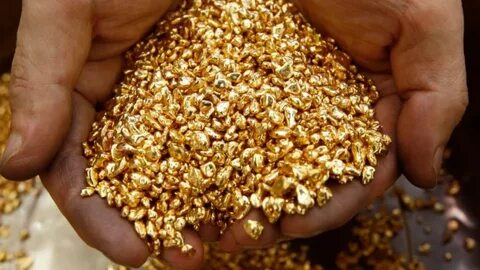Price for Gold Continues to Soar as Demand Increases
The price for gold has been continuously rising as demand for the precious metal increases worldwide. As economic uncertainty looms and geopolitical tensions persist, investors are turning to gold as a safe haven asset, driving up its price in the global market. This upward trend in gold prices reflects the ongoing appeal and significance of the metal in today’s volatile economic landscape. In this article, we will explore the factors contributing to the soaring price of gold and the implications it has on the global economy.
The price of gold has been steadily increasing as demand for the precious metal continues to rise. This can be attributed to various factors such as economic uncertainty, geopolitical tensions, and the desire for safe-haven assets. Investors are turning to gold as a way to protect their wealth and hedge against inflation. Additionally, central banks and governments around the world are increasing their gold reserves, further driving up demand. As a result, the price of gold has reached record highs, making it an attractive investment option for many.
The Current Market Price for Gold

The current market price for gold fluctuates daily based on supply and demand, geopolitical events, and economic indicators. As of the end of November 2021, the price of gold is around $1,781 per ounce. This price may change significantly in response to various global and economic factors. Investors and market participants closely monitor the price of gold as it is often seen as a safe haven asset in times of uncertainty.
Factors Affecting the Price of Gold

1. Economic indicators: The price of gold is influenced by economic factors such as inflation, interest rates, and the strength of the US dollar. In times of economic uncertainty, gold is often seen as a safe-haven investment, causing its price to rise.
2. Geopolitical events: Political instability and conflict can also affect the price of gold. When geopolitical tensions rise, investors often turn to gold as a hedge against potential risks, driving up its price.
3. Demand and supply: Like any commodity, the price of gold is also affected by supply and demand dynamics. Factors such as gold production, central bank purchases, and consumer demand for jewelry and industrial uses all play a role in determining its price.
4. Market speculation: The gold market is also influenced by speculative trading, as investors and traders buy and sell gold based on their expectations of future price movements. This can lead to short-term fluctuations in the price of gold.
5. Central bank policies: The monetary policies of central banks, particularly in major economies, can impact the price of gold. Actions such as quantitative easing or interest rate changes can affect the value of currencies and subsequently the price of gold.
Understanding the Fluctuating Price for Gold

Understanding the fluctuating price of gold involves tracking various factors such as supply and demand, interest rates, inflation, and global economic conditions. The price of gold also tends to react to geopolitical and market risks, as it is considered a safe-haven asset. Additionally, the value of the US dollar and the performance of other commodities like oil can impact the price of gold. Traders and investors often monitor these factors closely to predict and respond to changes in the price of gold.
Analyzing the Price Trends for Gold
See also: mega scan pro

Analyzing the price trends for gold involves looking at historical data, market dynamics, economic indicators, and geopolitical events to understand the factors that influence the price of gold. This analysis can help identify patterns and make predictions about future price movements. Traders and investors use various technical and fundamental analysis techniques to interpret price trends and determine potential entry and exit points for gold investments. For example, technical analysis tools like moving averages, trend lines, and chart patterns can be used to identify support and resistance levels, while fundamental analysis takes into account supply and demand dynamics, inflation rates, interest rates, and currency movements to gauge the underlying value of gold. Additionally, sentiment analysis, which involves monitoring investor sentiment and market positioning, can provide insights into market trends. Overall, analyzing price trends for gold requires a comprehensive understanding of the various factors that drive the precious metal’s value in the global marketplace.
Investing in Gold: Is Now the Right Time?
Investing in gold can be a good way to diversify your portfolio and hedge against inflation and economic uncertainty. With the current economic climate being uncertain due to factors such as the COVID-19 pandemic and geopolitical tensions, many investors are considering adding gold to their investment mix. Gold prices tend to perform well during times of market volatility and economic instability, making it an attractive option for investors looking to protect their wealth. However, it’s essential to consider your individual investment goals and risk tolerance before making any investment decisions. Consulting with a financial advisor or doing thorough research on gold investment opportunities can help you determine if now is the right time for you to invest in gold.
The Impact of Global Events on the Price of Gold
Global events can significantly impact the price of gold. Political instability, economic uncertainty, and other global crises often drive investors to seek safe-haven assets like gold, causing an increase in demand and subsequently a rise in price. For example, during times of geopolitical tensions or economic downturns, the price of gold tends to surge as investors flock to the precious metal as a store of value. Conversely, periods of stability and economic growth can lead to a decrease in gold prices as investors have less incentive to hold onto safe-haven assets. Overall, global events play a crucial role in shaping the price of gold in the financial markets.
Navigating the Volatility of Gold Prices
Navigating the volatility of gold prices can be challenging, as the value of this precious metal can fluctuate significantly over time. There are several factors that can impact gold prices, including economic trends, geopolitical events, currency fluctuations, and investor sentiment.
One way to navigate the volatility of gold prices is to stay informed about global economic and political developments. These events can have a direct impact on the demand for gold as a safe-haven asset, which in turn can affect its price.
Additionally, understanding the relationship between gold prices and other assets, such as stocks and bonds, can help investors navigate volatility. For example, gold is often seen as a hedge against inflation, so its price may rise when inflationary pressures are high.
It’s also important to consider the role of central banks and their policies in influencing gold prices. For example, changes in interest rates can affect the opportunity cost of holding gold, which can in turn impact its price.
Finally, investors can consider diversifying their portfolios with gold to help mitigate the impact of volatility. This can be done through physical gold, gold ETFs, or gold mining stocks.
By staying informed, understanding the various factors that influence gold prices, and diversifying their portfolios, investors can navigate the volatility of gold prices more effectively.
Predicting the Future Price of Gold
Predicting the future price of gold involves analyzing a variety of factors such as supply and demand, inflation rates, geopolitical events, and market sentiment. Additionally, technical analysis and historical price patterns are often used to forecast potential price movements. Traders and investors use a combination of fundamental and technical analysis to make educated predictions about the future price of gold. However, it’s important to note that predicting the future price of any asset, including gold, involves a degree of uncertainty and risk.
Comparing the Price of Gold to Other Precious Metals
Gold is often compared to other precious metals such as silver, platinum, and palladium due to their similar uses and investment attributes. Investors and analysts closely monitor the price of gold in relation to these other metals in order to gauge market trends and potential investment opportunities. While gold is typically considered the most stable and widely traded of the precious metals, its price in comparison to others can provide insights into market volatility and shifts in demand. For example, silver is often seen as a more volatile asset compared to gold, and its price tends to fluctuate more dramatically. Platinum and palladium, on the other hand, are known for their industrial applications in addition to their role as store of value assets, making their prices particularly sensitive to changes in global manufacturing and automotive industries. Overall, comparing the price of gold to other precious metals allows investors to diversify their portfolios and gain a comprehensive understanding of the dynamics within the precious metals market.
Strategies for Profiting from Gold Price Movements
Strategies for profiting from gold price movements include trading gold futures and options, buying and selling physical gold, investing in gold mining stocks, and trading gold exchange-traded funds (ETFs). Additionally, investors can employ technical analysis and follow market trends to make informed decisions when trading gold. It is crucial to continuously monitor market conditions and stay informed about global economic and geopolitical factors that can impact the price of gold. Diversifying investments across various gold-related assets can also help manage risk and maximize potential returns.
In conclusion, the price for gold continues to soar as demand increases, indicating a strong market for the precious metal. This trend is likely to persist as economic uncertainty and inflation fears drive investors to seek out safe-haven assets like gold. As a result, the price for gold is expected to remain elevated in the near future.
See also
https://www.gold.fr/
https://www.bullionbypost.fr/cours-de-lor/cours-de-lor-actuel/
https://or.fr/cours/or
https://www.aucoffre.com/cours-or
https://www.bullionbypost.fr/cours-de-lor/cours-de-lor-aujourdhui/
https://or.bullionvault.fr/Cours-De-L-Or.do







